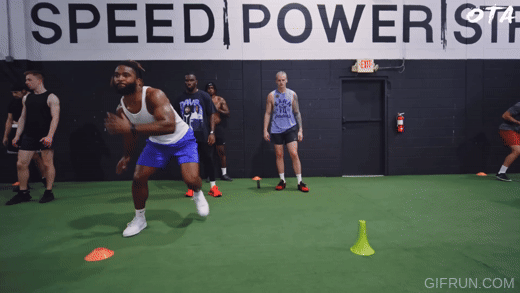Introduction:
Agility is a crucial aspect of football that can make or break a player’s performance on the field. The ability to change direction quickly, accelerate, and decelerate with precision can give you a significant advantage over your opponents. In this blog post, we will explore the world of agility training for football players and provide you with valuable insights, exercises, and strategies to take your game to the next level.
1. The Importance of Agility Training for Football Players:
Agility training plays a pivotal role in enhancing a football player’s performance in various aspects of the game. Here’s why it is essential:
a. Enhanced Footwork and Body Control:
Agility training focuses on improving your footwork, coordination, and body control, allowing you to react swiftly and precisely during game situations.
b. Improved Change of Direction:
Football is a dynamic sport that requires frequent changes in direction. Agility training helps you develop the ability to change direction quickly, enabling you to outmaneuver opponents and create scoring opportunities.
c. Injury Prevention:
Agility training involves exercises that strengthen the muscles, tendons, and ligaments, reducing the risk of injuries such as ankle sprains and knee strains.

2. Key Exercises for Agility Training:
a. Ladder Drills:
Ladder drills are excellent for improving foot speed, coordination, and agility. Set up an agility ladder and perform exercises such as lateral hops, in-and-out drills, and ladder sprints. These drills challenge your footwork and help you develop quick reaction times.
b. Cone Drills:
Cone drills are versatile and can be customized to target specific movements required in football. Set up cones in various formations and perform drills like 5-10-5 agility shuttle, T-drill, and figure-eight drill. These exercises improve your acceleration, deceleration, and change of direction abilities.
c. Plyometric Exercises:
Plyometric exercises, such as box jumps, lateral bounds, and depth jumps, are vital for developing explosive power and reactive strength. These exercises mimic the explosive movements required during football games, enhancing your ability to generate power quickly and efficiently.
d. Reaction Drills:
Football is a game of split-second decisions. Reaction drills, such as the mirror drill and the agility ball drill, improve your cognitive abilities, decision-making skills, and quick reflexes. These drills simulate game-like scenarios, preparing you for unpredictable situations on the field.
e. Quarter Arc sprints:
In Football, agility plays a vital role in an athlete’s performance on the field. Incorporating specific exercises into training routines is crucial to maximize agility and enhance game-time movements. Incorporating these game-time agility exercises into your training routine can greatly benefit American football athletes.
Remember to gradually increase the intensity and complexity of the exercises to continue challenging yourself and reaching new levels of performance.
3. Strategies for Successful Agility Training:
a. Consistency:
Consistency is key when it comes to agility training. Incorporate agility exercises into your regular training routine and commit to regular practice sessions. Consistent training will help you build muscle memory and improve your overall agility over time.
b. Progressive Overload:
To continue progressing in agility training, gradually increase the difficulty and intensity of your exercises. Challenge yourself by increasing speed, adding obstacles, and external stimulus like a last second command to cut right or left. This progressive overload principle ensures continuous improvement.
c. Sport-Specific Drills:
Tailor your agility training to mimic the movements and demands of football. Incorporate drills that involve cutting, accelerating, and decelerating, as these movements are vital on the football field. By simulating game scenarios during training, you can better prepare yourself for in-game situations.
d. Recovery and Injury Prevention:
Prioritize recovery and injury prevention to maintain optimal agility. Incorporate rest days into your training schedule and incorporate stretching and mobility exercises to keep your muscles flexible and injury-free.
Conclusion:
Agility training is a fundamental component of a football player’s training regimen. By incorporating the right exercises and strategies, you can enhance your footwork, change of direction, and overall agility on the field. Consistency, progressive overload, and sport-specific drills are key to unlocking your full potential as a football player. So, if you’re looking for a complete football training program to increase your performance on the field; check out Football Performance System below…

